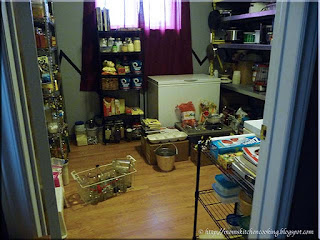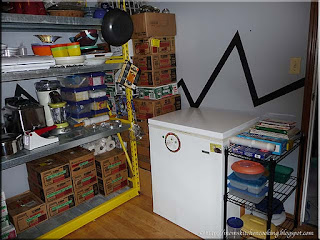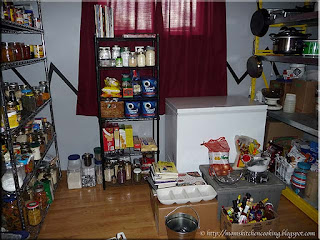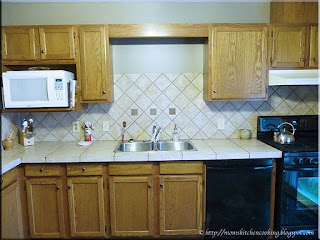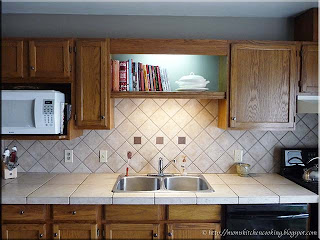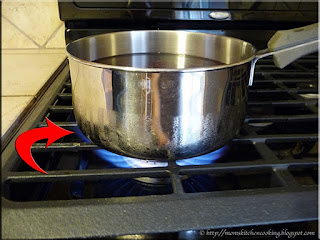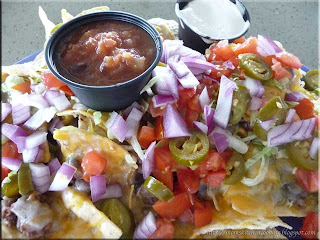
I had a topic I wanted to blog about today then a kitchen injury happened while I was making spaghetti sauce for lasagna and moose meat chili. I don't use a lot of commercially canned foods but this year I have had to resort to using some simply because I did not get as much canning done with our recent move. The lid snapped back slicing through my thumb very close to the underside of the nail, spanning across the entire thumb. It likely needed stitches but the cut was slow close to nail, I doubt they would have stitched it up so I used basic emergency first aid to secure the wound. I decided to write about preventing injuries in the kitchen instead. The reason being is I was careless which is the cause for most kitchen injuries. In other words most kitchen injuries are preventable. This week's Frugal Kitchens 101 focuses on kitchen injuries, preventing them and a few tips for dealing with the common kitchen injuries.
- emergency first aid training - It is my belief that if you cook you do need to have emergency first aid training. An amazing number of hazardous chemicals can be found in the kitchen so I even suggest being WHIMS certified. I have CPR, emergency first aid and WHIMS certification. For most home cooks emergency first aid is recommended and you should have a good understanding what the chemical warning signs mean.
- cuts - Most cuts in the kitchen are caused by can openers (eg. my recent cut) or by trying to cut with a dull knife. Second to those causes is glass breakage. The common recommendation is to keep fingers away from lids cut with a can opener but sometimes they snap back causing a cut anyway. Prevent this by using the type of can opener that doesn't leave a sharp edge (eg. I'm going shopping). Keep knives sharpened and properly stored. Never put your hand into a glass or jar and avoid thermal shock breakage of glass (eg. pouring hot liquid into a cold glass). If a glass or jar falls onto the floor causing breakage, stop what you are doing and vacuum up the broken glass. In the event of a cut, stop what you are doing and turn off any stovetop burners. Assess whether the cut needs medical attention or not. If it does not need stitches, clean the cut then pat dry and bandage well applying pressure. Pressure will stop the bleeding while promoting the skin to fuse back together. Use a pair of surgical gloves (latex or latex free available in pharmacies) to prevent blood from contaminating food and to prevent contamination to the wound. Keep the cut clean, dry and bandaged until healed to prevent any complication like infection. If the cut needs stitches, wrap tightly while applying pressure and keep the injured area elevated to slow blood flow to that area. Wrap the injured area in a clean towel or sheet to keep the area clean until it can be assessed medically. If the cut is severe, apply a tourniquet above the injury. In this event, it is best to call a friend or neighbour to ensure you can get to the hospital safely rather than drive yourself.
- burns - There are several sources for burns in the kitchen. Burns are classified as first degree, second degree and third degree based on severity. Avoiding a burn is a lot less painful than dealing with a burn but the fact is burns do happen. Keep pot handles turned towards the inside of the stove when cooking. Avoid loose fitting clothes and keep hair longer than shoulder length tied back. Burners should be off when not in use and should not be used unsupervised. Do not put grease on any burn! Use ice water instead. Minor burns can be treated with the juice from aloe vera. Some burns may require medical treatment. In this case, do not put anything on the burn other than a clean, sterile bandage/wrap to protect the injured area while seeking medical help.
- slip and falls - The kitchen is second only to the bathroom with respect to household slip and fall accidents. It is best to avoid shiny floor surfaces (eg. shiny ceramic tile, marble) but if you are like me having a shiny floor surface then minimize the possibility of slip and falls. Wipe up any spills as they happen. If your kitchen opens to the outdoors, use a throw mat to ensure feet are dry. Don't cook in bare feet. Borrowing from laboratory standard practices and a kitchen is very much like a laboratory, feet should be covered anytime you are cooking. Use indoor shoes or slippers with non-slip bottoms.
- fires - The kitchen is the prime location for many household fires. Equip your kitchen with a smoke detector and fire extinguisher but if in doubt get out. If you have natural gas in the house for anything (eg. furnace, water heater, kitchen range) and you smell gas do not use anything electrical (eg. light switch) as there is the risk of explosion. Vacate the premises then when you are in a safe location call your local gas provider to report the leak. Never leave a stove unattended when the burners are on. Should a pot catch fire, place a tight fitting lid on the pot that will extinguish the flames. Never put grease fires out with water as that will cause them to spread. Use baking soda, salt or a fire extinguisher on grease fires. Keep all flammables (eg. T-towels, curtains, loose clothing) away from the stove burners and do not have any flammable/combustible/explosive cleaners anywhere near a source of heat in the kitchen.
- kids/pets - In general kids and pets should be kept out of the path of cooking. I do not believe in keeping kids entirely out of the kitchen though as that is an ideal time to teach them a few cooking skills. Our kids were always in the kitchen even when I was canning but I created a safe zone for them away from the path of cooking. They were able to observe and I was able to keep an eye on them knowing they were safe. As they got a bit older they were able to help in the kitchen without a problem because they had learned good kitchen safety through observation. Pets have always been a no no in my kitchens. We had a cat for almost fifteen years who moved with us to a house well into older age and yet that cat knew the kitchen was off limits. It's quite easy for a pet to cause a slip and fall or even knock over a hot pot causing injury to itself or anyone nearby.








